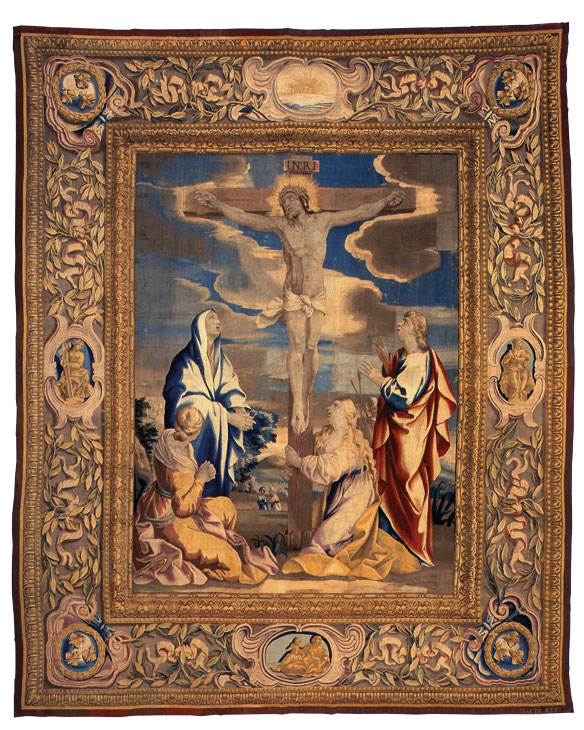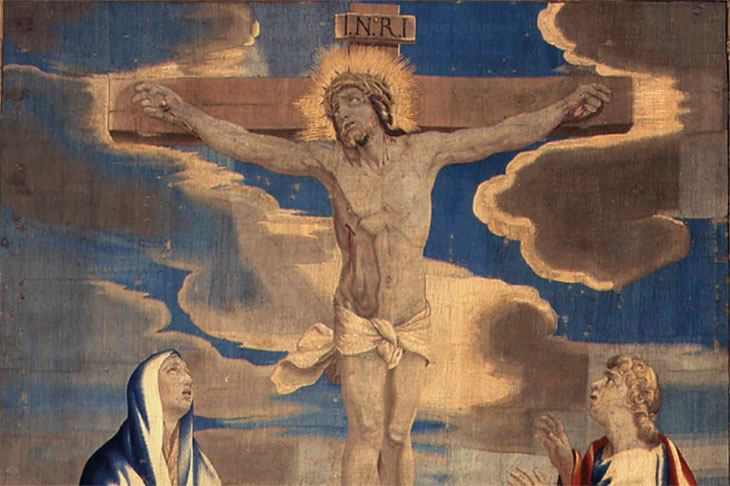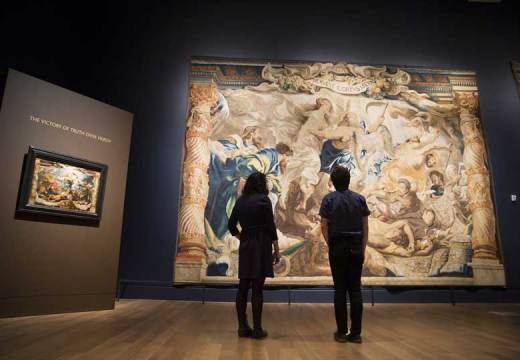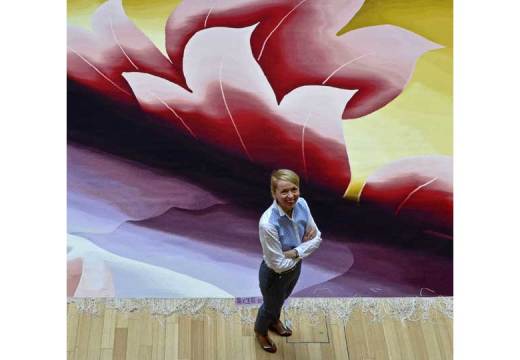For a century, tapestries woven in 17th-century Rome have hung between the stained-glass windows of the limestone sanctuary of the Cathedral of St John the Divine in Manhattan. Commissioned by the Barberini family in the 1640s, the set’s 12 panels depict episodes in Christ’s life. The cathedral is currently hosting the first major exhibition about the series, ‘The Barberini Tapestries: Woven Monuments of Baroque Rome’ (it travels this autumn to the Jordan Schnitzer Museum of Art at the University of Oregon in Eugene). The research team, led by James G. Harper at the University of Oregon and Marlene Eidelheit, head of the Textile Conservation Laboratory at the cathedral, has traced the tapestries’ wanderings and even counted their threads.
The Barberinis moved to Rome from Florence in the 16th century and efficiently climbed the ecclesiastical ladder. In 1623, when the family had been in the city for generations, Maffeo Barberini was elected as Pope Urban VIII. He showered his favourite nephew Francesco with job titles and sent him across Europe on diplomatic missions. Francesco built palazzos and filled them with art, collaborating with designers and painters such as Bernini and Poussin.
In 1625, Louis XIII presented Francesco with seven Rubens-designed tapestries, made in Paris and portraying the baptism of the Emperor Constantine. Envious of tapestries commissioned by European rulers and fabricated in their hometowns, Francesco set up a workshop for Flemish weavers near one of his homes in Rome. The staff became permanent residents; the leader, Jacob van den Vliete, changed his name to Giacomo della Riviera. The workshop lasted until shortly after Francesco’s death in 1679, producing a complete panel – measuring up to 27 feet long – every 10 months or so, for half a dozen major series depicting Barberini palaces as well as figures from mythology (Apollo), history (Constantine, Urban VIII) and the New Testament.
Giovanni Francesco Romanelli (c. 1610–62), the main designer of the Life of Christ series, recycled parts of the compositions from his own previous artworks. In the backgrounds he combined buildings from his own era and scholarly speculations on what the Holy Land had looked like in the time of Christ. Following Romanelli’s cartoons, artisans used silk and wool to produce what Harper calls ‘special effects’, where translucent rivers ripple and sunbeams glint on angels’ wings. Bees from the Barberini coat of arms were stitched along the tapestries’ fictive gilded frames; one bee is shown whipping two others that are pushing a plough through a furrowed field. Atop one panel with a map of the Holy Land, a putto sips from a honeycomb. In Harper’s interpretation, the scene suggests that Rome was ‘a land of Milk and Barberinian Honey’.

The Crucifixion from ‘Scenes from the Life of Christ’ (1647–48), Rome, series designed by Giovanni Francesco Romanelli. Cathedral of St John the Divine New York
Churches borrowed Francesco’s textiles to display during festivals. Wealthy theological students used them as impressive classroom backdrops when they defended their theses. Francesco’s heirs, however, mostly kept the panels in storerooms. In 1889, a newlywed Barberini prince and princess sold the Life of Christ series and about 120 other inherited tapestries to the American dealer Charles Mather Ffoulke. The philanthropist Elizabeth Underhill Coles, who bought the Life of Christ set from Ffoulke, barely unwrapped them before bequeathing them to St John the Divine. (She died in 1891, before a cornerstone was laid for the massive neo-gothic compound.)
The tapestries have been shuttled over the years from crypt to apse, transept, and side chapel. Around 1940, they were restored at a Manhattan workshop run by Baroness Wilhelmine von Godin, a dynamic immigrant from Munich who let journalists watch her in action. In late 2001, an electrical fire at the cathedral partly destroyed two of the tapestries. Many faces in the Last Supper have vanished; little of the Resurrection survives except the frame. Since the fire, Eidelheit’s team, based in a neoclassical outbuilding on the cathedral grounds, has stabilised the singed fragments and scrutinised, cleaned, and reinforced the 10 intact panels.
For the current exhibition, two sanctuary walls display recent photos of buildings in Rome to which the Barberinis lent the fabrics and vintage photos of the tapestries now in New York. (The pictures have hardly any captions, unfortunately, but that minor flaw is not as bothersome as the catalogue’s sprinkling of typos.) Back corridors and chapels are used for the Life of Christ set and related artefacts, including prints that inspired Romanelli, Ffoulke’s tapestry catalogue, and samples of the threads used in 21st-century reinforcements.
On each visit to the cathedral, I notice more details, down to the shadows in the rims of the cartouches and the robes of the saints. At sunset, the stained glass casts a rosy light on the woven bees, industriously ploughing their Roman fields.
‘The Barberini Tapestries: Woven Monuments of Baroque Rome’ is at the Cathedral of St John the Divine, New York, until 25 June.
From the June 2017 issue of Apollo. Preview and subscribe here.
Unlimited access from just $16 every 3 months
Subscribe to get unlimited and exclusive access to the top art stories, interviews and exhibition reviews.














![Masterpiece [Re]discovery 2022. Photo: Ben Fisher Photography, courtesy of Masterpiece London](http://www.apollo-magazine.com/wp-content/uploads/2022/07/MPL2022_4263.jpg)
It’s time for the government of London to return to its rightful home